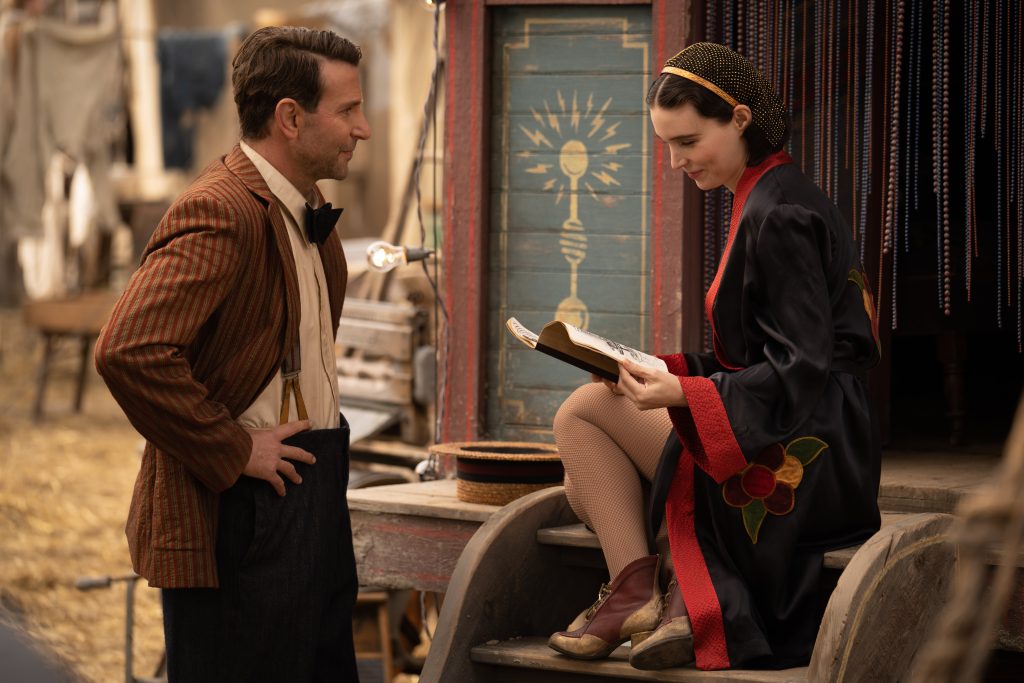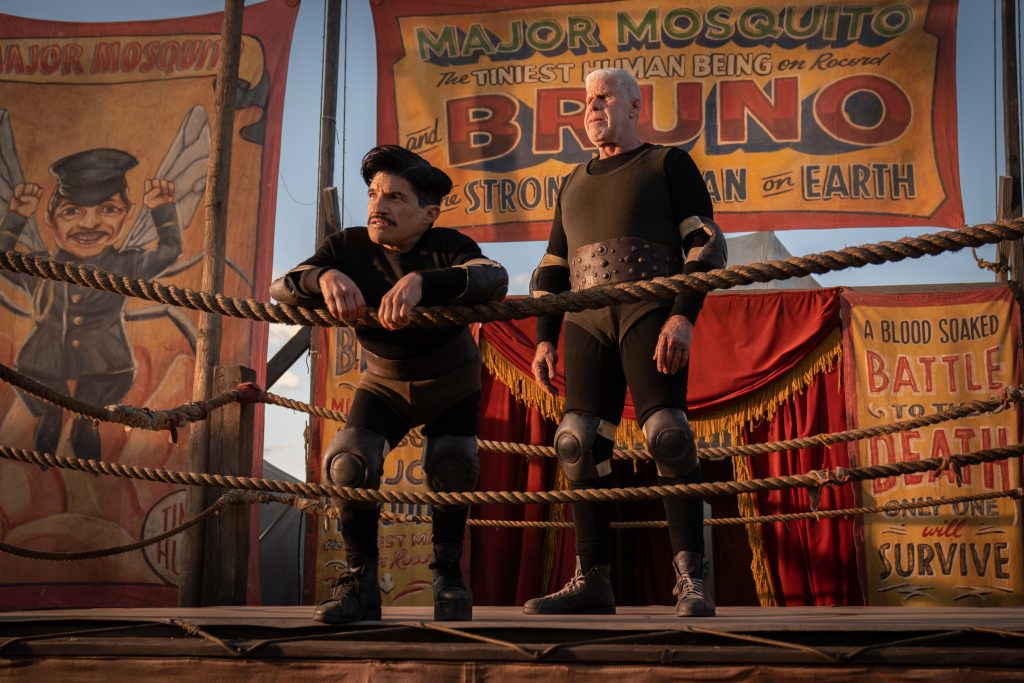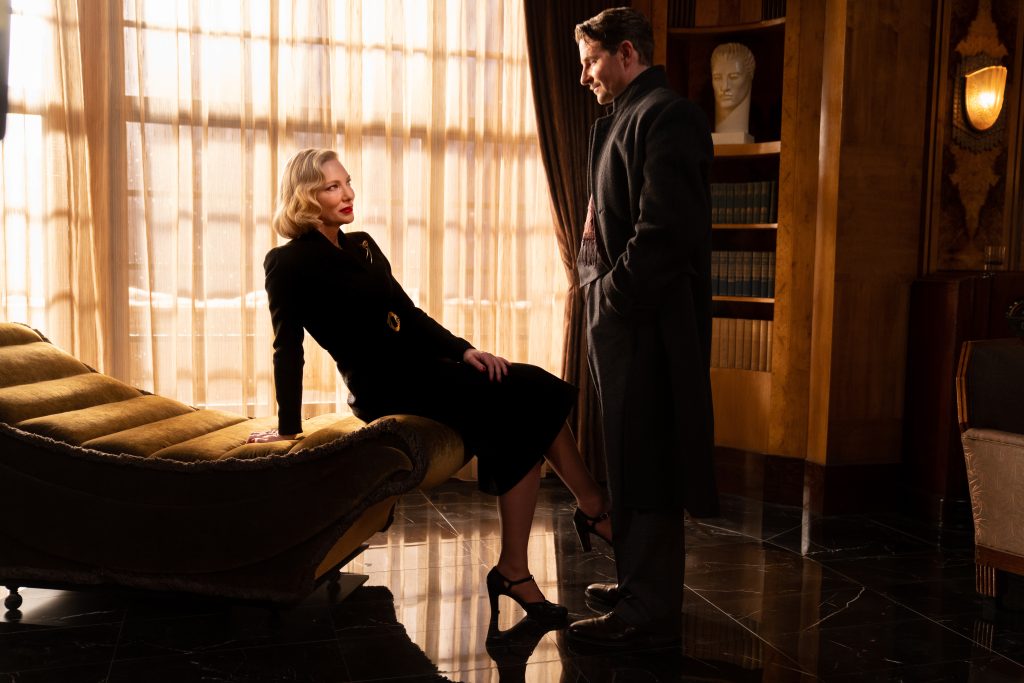
All realms of life are driven by a sense of shock and wonder, from the working class on the fringe of society to the wealthy and powerful, especially when its members are continuously driven by seduction and treachery. That’s certainly the case for the troubled anti-hero and the people of various backgrounds he forms relationships with in genre director Guillermo del Toro’s new neo-noir psychological thriller, Nightmare Alley.
The helmer, who also adapted the film’s screenplay with Kim Morgan from the 1946 novel of the same name by William Lindsay Gresham, stunningly brought the story’s troubled protagonist, Stanton “Stan” Carlisle, to the screen. The drifting hustler sells his soul to the art of the con in order to transforms himself into a successful showman and manipulator. But as he rises amongst the ranks of society, he starts to believe he can outwit fate, until his American Dream quickly begins to unravel.

Nightmare Alley follows Stan (Bradley Cooper) as he sets out in search of a better life in the midst of the Great Depression in the late 1930s. During his journey, he visits a traveling carnival, where he’s hired by the owner, Clement “Clem” Hoately (Willem Dafoe), to assist in setting up some of the attractions.
While working for the carnival, Stan becomes close with a clairvoyant, Zeena (Toni Collette), and her mentalist husband, Pete (David Strathairn), as he helps them stage their show and trick the audience into believing the abilities they claim to have are real. After learning the couple’s greatest tricks, Stan lures another one of the carnival’s performers, Molly (Rooney Mara), into starting their own two-person act away from the group.
The newly formed duo, who also start a personal romantic relationship, uses Stan’s newly acquired knowledge of working as a mentalist to swindle money from the wealthy elite of 1940s society in Chicago. As the couple begins to garner success with their routine, Stan becomes increasingly obsessed with earning more fame and fortune.
In what he believes will be an easy, quick scheme to make a large sum of money, Stan plots to con a dangerous tycoon, Ezra Grindle (Richard Jenkins). Stan enlists the help of a mysterious, elite psychiatrist he and Molly meet at one of their shows, Lilith Ritter (Cate Blanchett), who might actually be his most formidable opponent yet.

The drama uniquely stands out in the neo-noir thriller genre for being set in a visceral realism, while also taking on the urgency of a moral fable, particularly for its lead character. While Stan’s background and motives for seeking a continuous rise in fame and fortune, no matter how much he has already achieved, aren’t immediately or fully revealed, Cooper expertly infuses the anti-hero with a relatable need to find a sense of security throughout the story.
Instead of putting a classic, predictable femme fatale in peril, Nightmare Alley explores the neo-noir psychological thriller genre from a different perspective; Stan is continuously characterized by the women he becomes associated with, and eventually dominated by, throughout the story. Cooper embodies his character’s universal need to be loved and accepted by the women in his life, from Zeena to Molly and particularly Lilith.
While Stan’s accepted, albeit somewhat reluctantly at first, by the carnival’s community, Cooper intuitively translates del Toro and Morgan’s powerful theme that his character ultimately rebuffs his fellow carnies’ support. Stan instead thrives on the increasingly terrifying and threatening situations he becomes entangled as he tries to move up in society; he desperately yearns for Lilith’s full approval, no matter how much she shows her subtle and overt criticisms of him, making him the ultimate homme fatale.
Cooper’s powerful infusion and blending of charisma and vulnerability as he pursues his ambitions is set against the movie’s mesmerizing, immersive and distinctive production design, which was created by Tamara Deverell.
She created visually stunning sets that helped create authentic atmospheres for each scene.

The production designer anchored each set in intensive research. As a result, she built stunning vintage amusement rides, including an authentic Ferris wheel, a functioning merry go-round and a heaven-and-hell-themed funhouse, which metaphorically emphasize the continuous rise and fall of Stan’s fortune.
Once Stan and Molly leave the carnival to move to Chicago, Deverell designed a swanky, lavish nightclub and apartment filled with a sleek Art Deco aesthetic, which further sets Nightmare Alley in visceral realism. The club and apartment where Stan and Molly live represent the pinnacle of his success before his life begins to deconstruct around him again.
The overall look of the film was also meticulously created to reflect Stan’s troubles through the cinematography of Dan Laustsen, who previously worked with del Toro on the Academy Award-winning The Shape of Water. The duo rightfully choose to shoot Nightmare Alley in dark colors that are showcased in light that moves from dim and naturalistic to increasingly bright and harsh, in an effort to highlight the vivid symbolism of Stan being pulled too deep into his own harmful schemes. The director of photography also created a sense of dread over the tumultuous situations Stan finds himself in through continuous wide shots that linger on both his subtle and overt emotional and physical altercations.
Nightmare Alley‘s visceral realistic elements make it an instant neo-noir psychological thriller classic that won’t soon be forgotten. While set almost 80 years ago, Cooper’s enthralling portrayal of the ultimate homme fatale who seeks validation from the women in his life, as well as the visually stunning production design by Deverell and cinematography from Laustsen that represents Stan’s continued pursuit of fame and fortune, makes del Toro’s latest genre movie a contemporary masterpiece.
Searchlight Pictures is releasing Nightmare Alley in theaters today, Friday, December 17.
Grade: A-
Here’s the trailer of the film.

